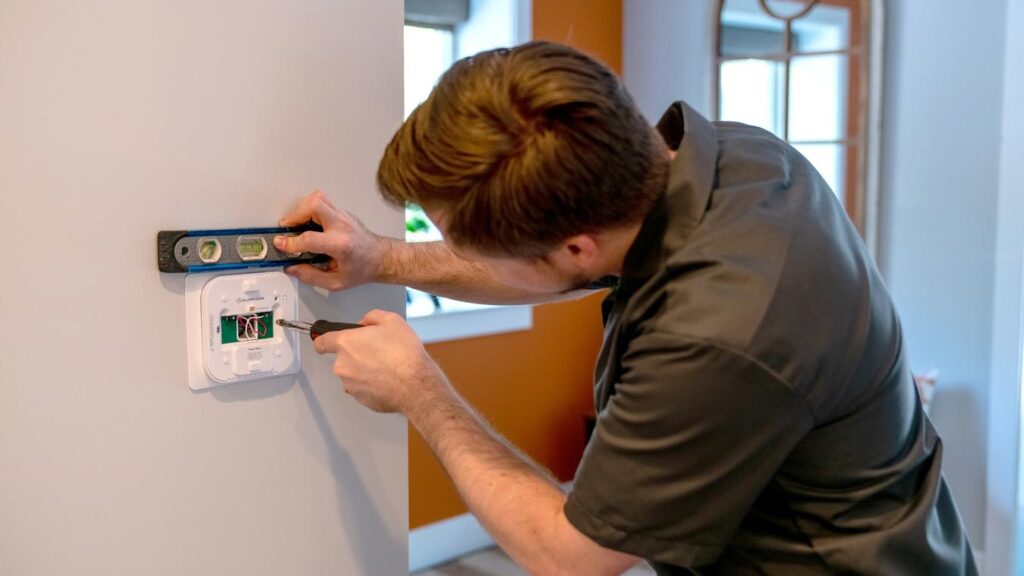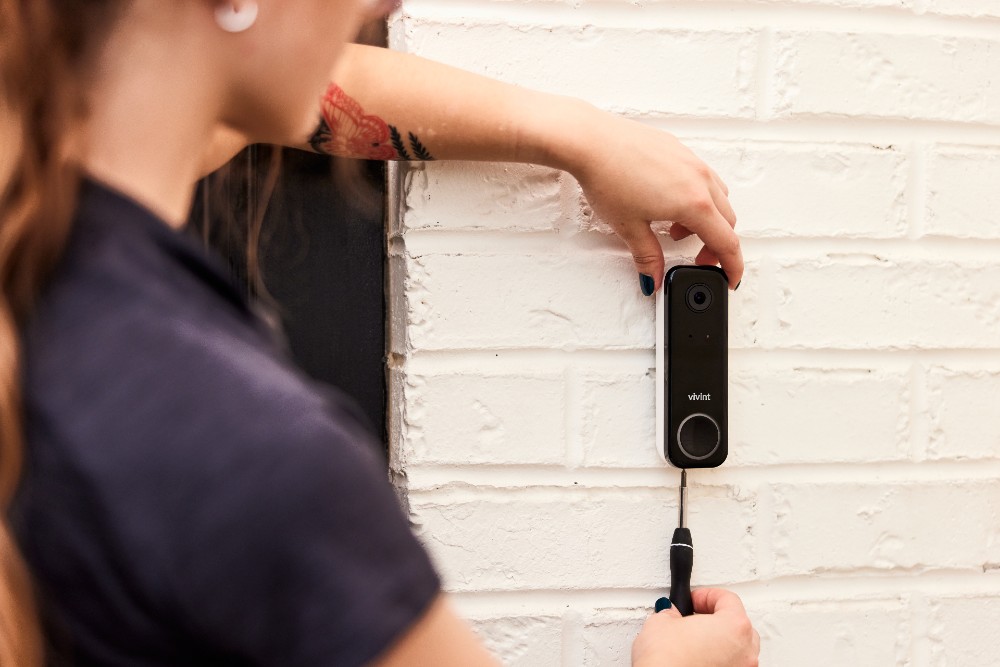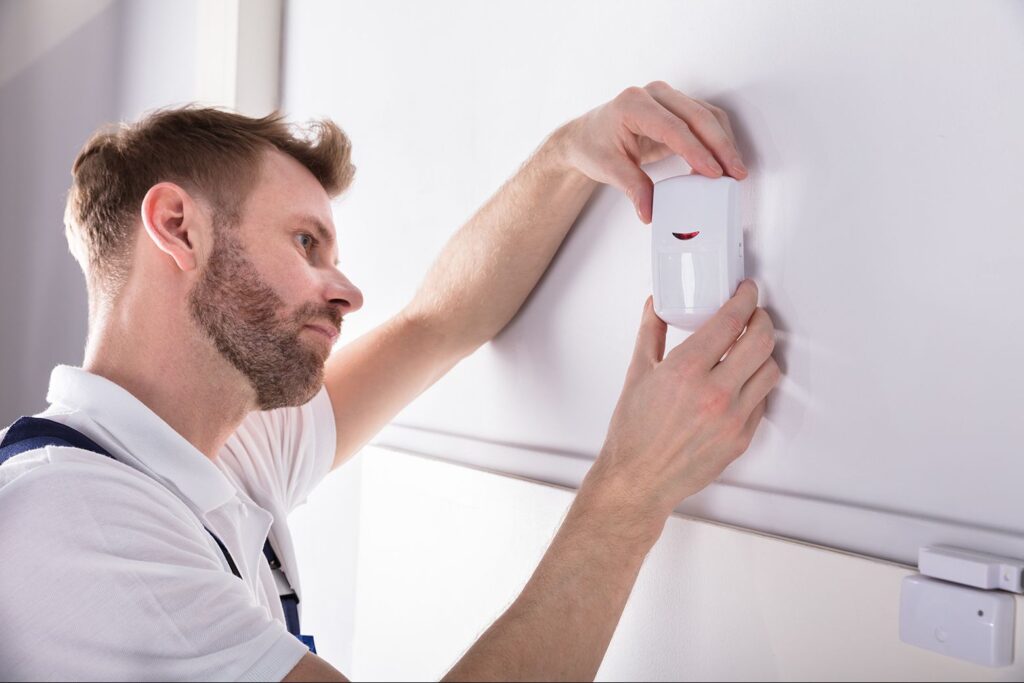Installing a home security system is an important decision for protecting your property and loved ones. The choice between professional installation and DIY approaches can greatly affect the effectiveness of your security system and your budget.
A modern home security system installation is like a complete shield, with different parts working together to keep you safe:
- Surveillance cameras
- Motion detectors
- Access control systems
- Smart alarms
- Remote monitoring capabilities
The way you choose to install your system will shape your security experience from the very beginning. Professional installation brings expertise and precision but comes at a higher cost. DIY installation offers flexibility and potential savings but requires technical understanding and time investment.
This guide looks closely at both installation methods, discussing their unique benefits, challenges, and costs. You’ll learn about the important factors to think about when deciding between professional and DIY installation, such as technical requirements and long-term maintenance needs. This knowledge will help you make a smart choice that fits your security goals and abilities.
Understanding Home Security Systems
Modern home security systems consist of several essential parts working together to create a strong defence against potential threats. Each part has a specific role in protecting properties and the people inside them.
Key Security System Components:
1. Intrusion Detection Systems
- Motion sensors that detect unauthorised movement
- Door and window sensors for breach detection
- Glass break detectors identifying forced entry attempts
- Shock sensors monitoring structural disturbances
2. CCTV Surveillance Cameras
- High-resolution video capture capabilities
- Cloud storage integration
- Remote viewing through mobile applications
- Night vision functionality
- Wide-angle coverage options
3. Access Control Mechanisms
- Electronic keypads
- Swipe card systems
- Biometric scanners
- Smart locks with remote management
- Video intercom systems
4. Alarm Systems
- Loud sirens and strobe lights
- Instant mobile notifications
- Back-to-base monitoring
- Emergency response protocols
- Panic buttons for immediate assistance
Alpha Security Corp specialises in integrating these components into customised security solutions. Their expertise spans across residential, commercial, and industrial applications, with systems designed to address specific security challenges. The company’s approach involves thorough site assessment, strategic placement of components, and seamless integration with existing infrastructure.
These integrated systems offer comprehensive protection through:
- 24/7 monitoring capabilities
- Real-time threat detection
- Immediate emergency response
- Evidence collection
- Remote management options
- Smart home integration
The effectiveness of a security system relies heavily on the strategic combination of these components, tailored to specific property requirements and potential risk factors.
Types of Security System Installations
Modern security systems offer two primary installation approaches: DIY and professional installation. Each option presents distinct characteristics that cater to different needs and preferences.
1. DIY Installation
DIY security system installation has gained popularity due to its cost-effectiveness and flexibility. The setup process typically involves:
Initial Setup Steps:
- Unboxing and inventory check of components
- Downloading the system’s mobile application
- Creating user account and connecting to home WiFi
- Placing the central hub near router for optimal connectivity
Component Installation:
- Mounting door/window sensors using adhesive strips
- Positioning motion detectors at optimal heights
- Installing cameras in strategic locations
- Setting up smart doorbell systems
- Connecting additional devices like smoke detectors
System Configuration:
- Customising security zones
- Programming emergency contacts
- Setting up mobile notifications
- Testing sensor connectivity
- Establishing monitoring preferences
Advantages of DIY Installation:
- Cost savings on installation fees
- Flexible scheduling for setup
- Easy system modifications
- No stranger entry required
- Direct knowledge of system layout
Potential Drawbacks:
- Limited technical support
- Risk of improper installation
- Troubleshooting responsibility
- Time investment required
- Possible connectivity issues
The DIY approach suits tech-savvy homeowners comfortable with digital devices and basic tools. Wireless systems simplify the installation process by eliminating complex wiring requirements. Many manufacturers provide detailed video tutorials and step-by-step guides to support the setup process.
The success of a DIY installation depends on proper planning and attention to detail. Critical factors include:
- Accurate measurement of spaces
- Proper placement of sensors
- Strong WiFi signal throughout coverage areas
- Regular system testing
- Understanding of basic security principles
It’s also worth noting that while DIY installations can be beneficial, they come with their own set of challenges, such as the potential for improper installation.

2. Professional Installation
Professional security system installation brings expertise and precision to the setup process. Licensed technicians conduct thorough site assessments to determine optimal placement of security components, ensuring maximum coverage and effectiveness. Learn more about what to expect from a Residential Security Consultant.
The installation process includes:
- Initial Assessment: Technicians evaluate entry points, blind spots, and potential vulnerabilities
- Custom System Design: Creation of tailored security solutions based on property layout
- Professional Wiring: Expert routing of cables through walls and ceilings
- Component Integration: Seamless connection of all security elements
- System Testing: Comprehensive checks to verify proper functionality
- User Training: Detailed guidance on system operation and maintenance
Professional installers handle complex tasks such as:
- Mounting and positioning cameras at strategic angles
- Installing motion sensors with precise sensitivity settings
- Setting up control panels and programming system parameters
- Configuring remote access and smartphone connectivity
- Establishing connections with monitoring centres
The cost structure for professional installation typically includes:
- Base installation fee: £200-£800
- Equipment costs: £300-£2,000
- Monthly monitoring fees: £20-£50
- Extended warranty options
- Regular maintenance packages
Professional installation offers built-in technical support, with technicians available for:
- System troubleshooting
- Equipment repairs
- Software updates
- System upgrades
- Emergency service calls
This installation method suits properties requiring complex security setups, integration with existing systems, or specific compliance requirements as outlined in the Sensitive Systems Policy Directive. The expertise provided ensures optimal system performance and reliable security coverage.
Cost Considerations in Choosing Between Professional and DIY Installations
The financial aspects of security system installations extend beyond the initial equipment costs. A detailed cost breakdown helps make an informed decision between professional and DIY approaches.
Professional Installation Costs:
- Equipment packages: £500-£2,000
- Labour fees: £200-£800 per installation
- System programming: £100-£300
- Annual maintenance contracts: £150-£400
- Monitoring services: £20-£50 monthly
DIY Installation Costs:
- Basic equipment kits: £200-£800
- Additional sensors/cameras: £50-£200 each
- Mobile app subscriptions: £5-£15 monthly
- Self-maintenance supplies: £50-£100 annually
- Replacement parts: Variable costs
Hidden Cost Factors:
When comparing professional alarm installation vs DIY solutions, it’s important to consider the hidden costs involved. For instance, professional installations often include warranty coverage which can save money in the long run. On the other hand, DIY systems might necessitate tool purchases which could add to the overall cost.
Moreover, professional setups typically reduce the risk of equipment damage due to their certified expertise. This is a crucial aspect to consider as DIY mistakes could lead to replacement costs, further straining your budget.
Additionally, it’s worth noting that insurance companies often offer discounts for professionally installed systems, making them a more financially viable option in the long term.
The true value of each option becomes apparent when considering long-term expenses. Professional installations provide certified expertise and ongoing support, while DIY approaches offer immediate cost savings but require personal time investment and technical knowledge. The choice impacts both immediate budget requirements and long-term financial commitments.
Additional Factors to Keep in Mind When Deciding Between Professional and DIY Installations
The choice between wired and wireless systems plays a crucial role in the installation decision-making process. Each option presents distinct characteristics that affect both installation complexity and system performance. For a more detailed comparison, you can refer to this Wired vs Wireless Security Alarm Systems guide.
Wired Systems
- Reliable signal transmission without interference
- No battery replacement requirements
- Permanent installation with minimal maintenance
- Complex installation requiring wall modifications
- Limited flexibility for future modifications
Wireless Systems
- Quick and clean installation process
- Easy system expansion capabilities
- Portable components for layout changes
- Potential signal interference issues
- Regular battery maintenance needed
Pre-established security kits from professional installations offer significant advantages:
- Tested Compatibility: Components work seamlessly together, eliminating integration issues
- Scalability: Easy system expansion with pre-configured additional components
- Technical Support: Direct access to manufacturer expertise and troubleshooting
- Warranty Protection: Comprehensive coverage for both equipment and installation
- Regular Updates: Automatic firmware updates and security patches
The physical structure and size of the property also influence system selection. Larger homes with multiple floors might benefit from wired systems’ stable connectivity, while rental properties could find wireless systems’ flexibility more practical. Professional installers assess these factors during initial consultations to recommend appropriate solutions based on specific property requirements.

Conclusion
The choice between professional and DIY home security system installation depends on several key factors unique to each homeowner’s situation:
Technical Expertise
- DIY suits those with basic technical knowledge and time to learn
- Professional installation benefits those seeking hassle-free setup
Property Characteristics
- Larger homes with complex layouts warrant professional expertise
- Smaller properties with straightforward requirements suit DIY approaches
Budget Considerations
- DIY offers initial cost savings but requires personal time investment
- Professional installation provides peace of mind with expert support
The right installation method aligns with individual circumstances, including technical comfort level, property size, and available resources. A thorough assessment of these factors helps determine whether professional installation or DIY best serves specific security needs. Prioritising home security through either method strengthens property protection and creates a safer living environment.

